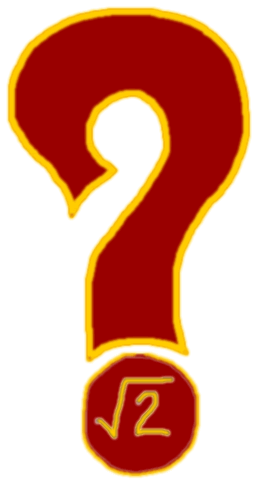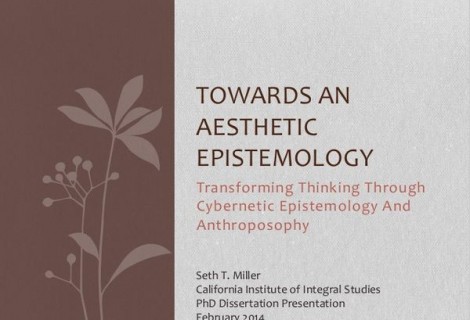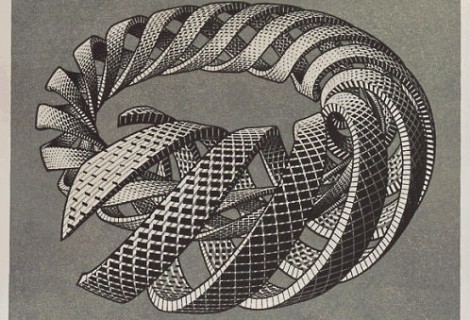Reality, Process, and Mathematics
All the qualities of the physical world exist through the interrelations of things to each other. What Moleschott says is correct for physical existence: ‘All existence is an existence through qualities. But there is no quality that does not exist through a relation.’ Just as everything of a soul nature contains something in itself by which it points to something outside itself, so conversely, a physical thing is so constituted that it is what it is through the relation to it of something outer.
(Rudolf Steiner, Riddles of the Soul, Mercury Press, 1996, p. 69.)
For such a philosophy, the relations that connect experiences must themselves be experienced relations, and any kind of relation experienced must be accounted as ‘real’ as anything else in the system.
(William James, Essays in Radical Empiricism, Cosimo, Inc., 1912/2008, p. 20)
In aesthetic epistemology, notions of “reality” are replaced by “patterns in process.” “Things” are (ontologically) patterned processes. We mistake the nature of the universe when we presume that “things,” to be, must “be” from the bottom up: on the basis of some “substance,” which THEN interacts in processes to yield what we experience (the first coherent expression of this began with the atoms in the void hypothesis of Leucippus and Democritus in Ancient Greece). We assume that it is silly to speak of patterns of process without some kind of “thing” that we can point to as an indicator that the process is proceeding. Because of the way our senses are involved in cognition, we tend to count as “real” only what can be made apparent to us through our senses (or their extensions via instruments). This is a huge presumption on our part. What if we tried to conceive of “substance” as a secondary phenomenon? What if process (thing-less process) is more primary? In this view, things are precipitates (momentary nodes, relatively ‘still’ areas of patterned processes) of higher-order relations… not relations between THINGS but relations qua the activity of relating. This may sound abstract, but this is because we are trained to think of reality in terms of substances (sub-stances: the “underneath-standings,” the bits from out of which a universe gets built).
The best example of one way that this can look is given in the field of mathematics. Mathematics has no atoms, not even metaphorical atoms; it is entirely substanceless. Rather, mathematics has, at its base, processes and their relations. Even numbers aren’t the basis of mathematics, where numbers would form the “things” that various logical operations “apply to.” Rather, the numbers themselves fall out of, are like precipitates out of, the field of logical relations themselves. The drama around this showed up millennia ago in the Pythagorean school. The Pythagoreans thought that the primal ground of the universe was number (specifically, whole numbers and their ratios). All being owed itself to number, which formed the ontological core of the universe. But they quickly ran into something that seemed to defy their understanding of what was meant by the very concept of number in the relationship between the diagonal of a square and its side. Indeed, the (possibly apocryphal) story is that Hippasus of Metapontum, a Pythagorean, when he announced to his fellows on a boat ride of his discovery that the ratio of a side of a square to its diagonal was incommensurable, was thrown overboard and drowned in order to try to keep this information from spreading.

Thus Louis Kauffman, former president of the American Society of Cybernetics and a professor of mathematics, rightly states that
There is mystery here. What are the actual digits in the decimal expansion of the square root of two? We can use a computer program and find more. At the end of any such calculation there are three proverbial dots, and no hint of a pattern in the digits. We have only pushed the difficulty forward and hidden it behind a thicket of chaotic digits.
(From: Virtual Logic — The Square Root of Two, by Louis. H. Kauffman, Cybernetics and Human Knowing, v17, n4, pp.81-88)
Why does this “pushing the difficulty forward” happen? Because thinking is self-obfuscating. In its normal progression, thinking precipitates thoughts. But then it takes these thoughts (first-order content) and uses them to obscure itself (as second-order process) by trying to substitute the thoughts for thinking–for itself. Thinking thus misidentifies itself with its own objects; it loses itself in its creations. It is very difficult for thinking to reverse this process (of itself becoming), and so in the case of the square root of two, it is much easier to continue with the confusion by externalizing it in a way that allows us to forget it.
For this reason we create a shorthand to indicate the process of this ratio: the square root sign. But we get lulled by this sign into treating the process as a still fact, a “bit” to be used in calculation. This is, of course, very helpful, because it allows us to work at a more abstract level with the process of the $latex \sqrt{2}$ relation; we literally abstract (draw out) the symbol from the process in order to use it, but in doing so often forget all the activity that is embedded in the symbol.
The important thing to note is that it is not only square roots which are at their root processes; ALL numbers are like this. To say it directly: all numbers are becomings, patterns of relations. All the arbitrary symbols that designate numbers are a short-hand by which these processes can be “fixed” and thus more easily manipulated. Even the number “$latex 1$” is short for an ongoingness, a never-ending process, expressed in decimals as the infinite number of zeros that follow the decimal point: $latex 1.0000\dots$ . Mathematicians are the people who have chosen as their profession the re-enlivening of the fixed symbols back into their process-nature, so that they can form new, free, creative relations with other relations, which can then be symbolized and fixed into new symbols that can be of use in calculation, closing the circle.
Why is this all important? It shows an example of how it is possible to think relationally in an exact way. One of the big fears of moving away from a substance ontology is the feeling that without some kind of static anchor, we lose predictability, control, precision, and clarity. If approached wisely, a process reality need not result in any such occurrences. Indeed, just the opposite is true: embracing patterns of processes as the deepest ontological level of the universe can yield far greater precision and clarity — but it is a precision and clarity that can only be had by doing the hard work of training our attention to move in resonance with the patterns that make up the “things” of the world. We always fail at this, and at some point we give up and “fix” a process with the use of a symbol. The symbol thus represents the cessation of the process. But just as we have the capacity to form symbols, so too we have the capacity to render what became abstracted and fixed (through our activity!) back towards its process-nature. What has precipitated can be dissolved. We can both fix and render back into solution.
Together these two tendencies form a basic polarity, a pattern, that describes the unfolding of other patterns; it is a meta-pattern. It illuminates how other processes happen. The symbolizing, fixing, cessation pole can be archetypally described as centric, while the re-enlivening, dissolving, rendering back into motion of the complementary pole is archetypally peripheral. This polarity forms a sort of primal archetypal recursive unity. The universe can be thought of as the play of this polarity in all its endlessness; the continual unfolding of the tension between centers and peripheries, at all levels. There are no true “things” here (meant in the old, substance-way), only relations between patterns in process.




